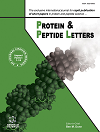
Full text loading...
Endogenous microRNAs (miRNAs) are critical regulators of tumor progression, making their role in breast cancer an important area of investigation.
This study examined the regulation of MSMO1 by miR-584-5p in breast cancer cells. Using bioinformatics and Western blotting, we confirmed MSMO1 expression in breast cancer cells and evaluated its effects on cell migration, invasion, and the AKT signaling pathway. In vivo experiments further supported these findings. The interaction between miR-584-5p and MSMO1 was validated through luciferase reporter assays, while functional studies highlighted the impact of miR-584-5p on cancer progression.
Our findings revealed that MSMO1 is upregulated in breast cancer, enhancing cell migration and invasion. Silencing MSMO1 diminished AKT pathway activity, and luciferase assays confirmed MSMO1 as a direct target of miR-584-5p.
Overexpression of miR-584-5p suppressed migration and invasion of breast cancer cells. In summary, miR-584-5p is likely to modulate MSMO1 and subsequently regulate the AKT/PI3K pathway, presenting a promising therapeutic target for breast cancer treatment.

Article metrics loading...

Full text loading...
References


Data & Media loading...

